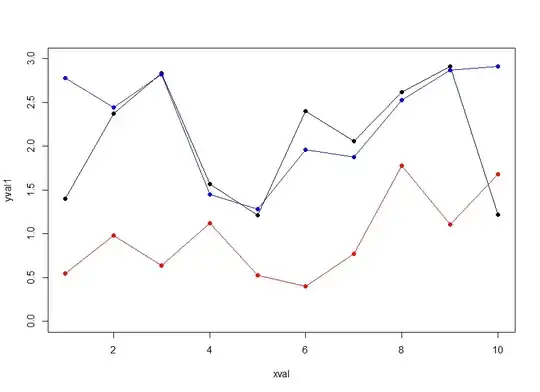I ran a linear regression with two independent variables on a dataset and got an R squared of approximately 40%. I then divided the dataset into two clusters and ran the linear regression on each of two clusters with the same independent variables.
I was surprised to get lower Multiple R squared of aboutx 30% and 20% on the two clusters.
My intuition didn't think this was possible given that I'm now fitting to a smaller dataset in both clusters, with the same independent variables.
Is this possible or must I be making a mistake somewhere?
